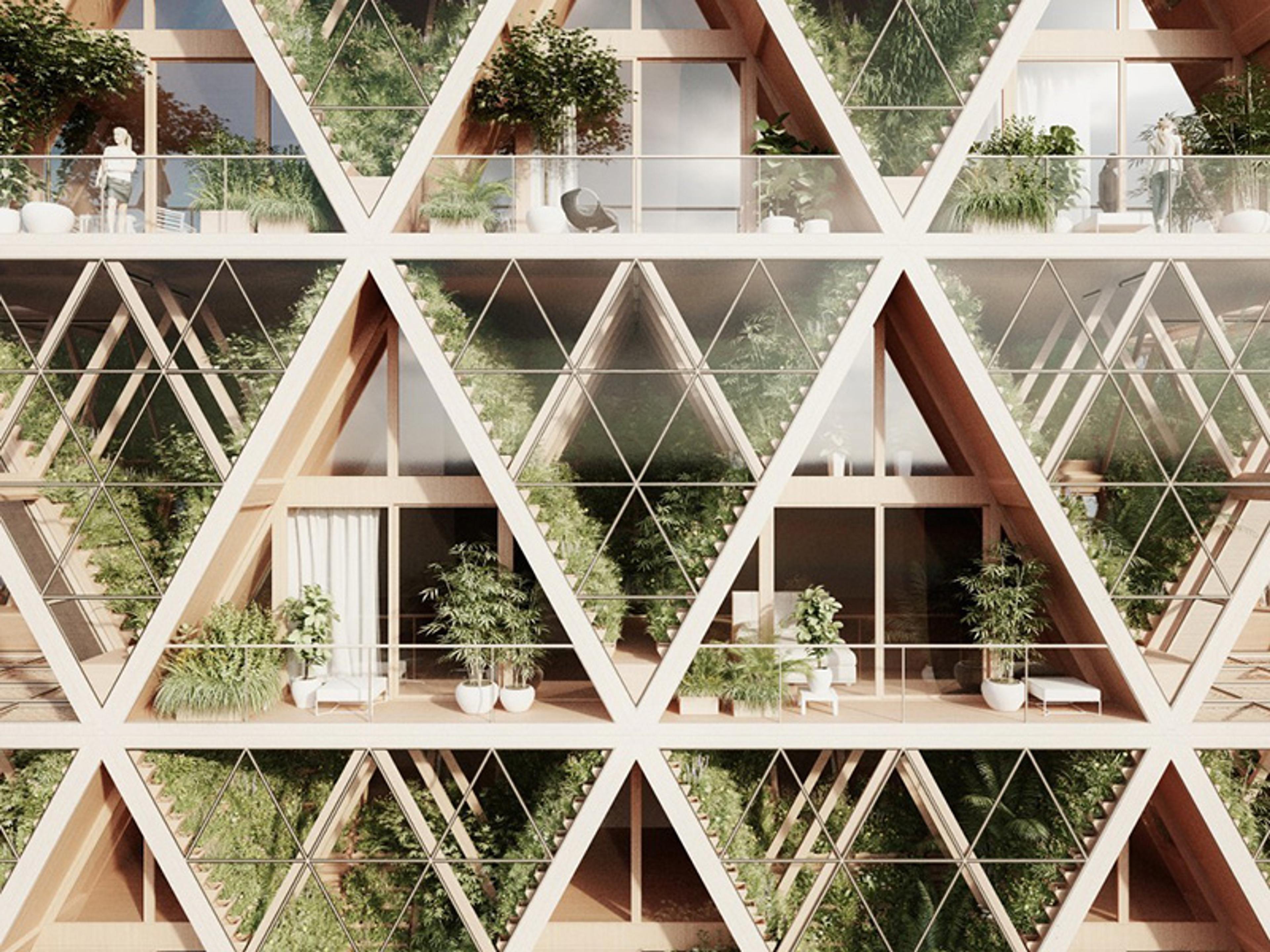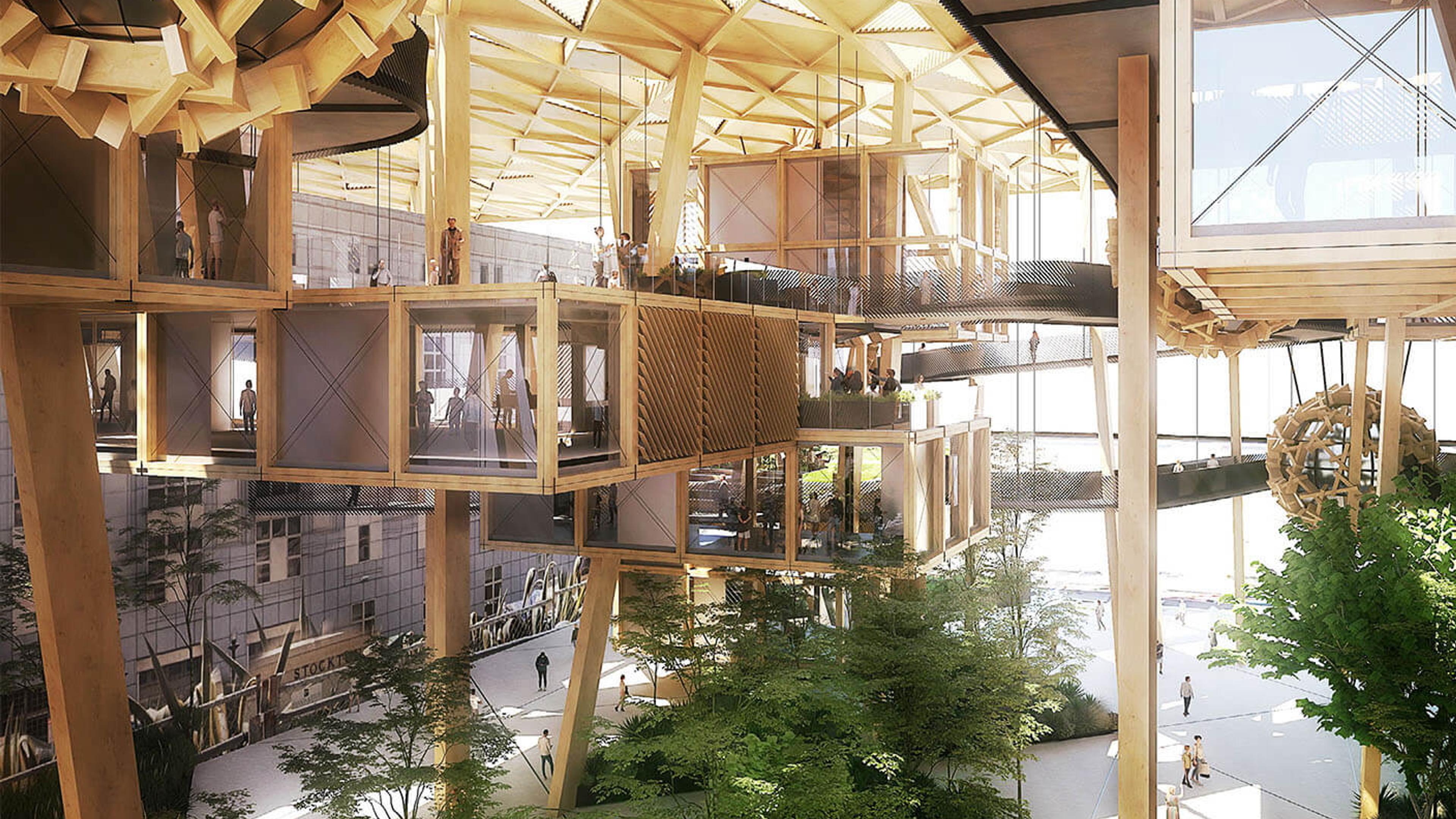Have you ever experienced a space that made you feel uneasy or stressed? Perhaps it was a noisy and crowded shopping mall, with its neon signs, patterned tilework and boldly painted walls in franchise signature colours. Or the poorly lit work carpark with flickering fluorescent lighting, low ceilings and hard concrete surfaces that made your every footstep echo. Now contrast that experience with a space that made you feel at ease. It might have been that time you were sitting at the table in your friend’s kitchen – the sun coming in through the window, warming your skin and filling the space with light; the smell of fresh coffee brewing; and the first blush of colour in the buds of the pot plants on the windowsill. Or maybe it was sitting in your favourite spot at the local library – the comfy seat in the quiet area with the high ceilings, ample natural light and a view out over the courtyard garden.
Many of us have felt the effects of being in different built environments. Yet what this means for our health and wellbeing hasn’t received enough research attention. How do the offices, houses, hospitals, schools, neighbourhoods and spaces that we occupy day to day affect our health? Traditionally, our understanding of how architectural design affects the human body has centred around the transmission of communicable diseases, such as viruses. For instance, the postwar urban redesign of the UK’s tenements worked to address overcrowded, damp and poorly ventilated housing conditions that are associated with increased rates of infectious diseases such as tuberculosis. However, the health effects of the built environment may be significantly more far-reaching than this.
Enter the emerging field of neuroarchitecture – an interdisciplinary domain that explores how the built environment affects human brain function, behaviour, cognition and psychology. Initial research indicates that, beyond its influence on infectious diseases, architectural design and form might also actively contribute to increased levels of stress in the body, which in turn could increase the risk of so-called noncommunicable diseases (often referred to as ‘lifestyle diseases’), including neurodegenerative and psychiatric conditions such as Alzheimer’s, Parkinson’s disease, depression and anxiety.
A better understanding of how the built environment impacts our health in these ways could revolutionise building design and urban planning. Imagine being able to design spaces that not only don’t cause harm, but actually promote overall wellbeing. In many ways, this burgeoning field validates what many of us have long intuitively felt: architecture is not merely the backdrop to our lives, but a crucial determinant of how we live and thrive.
Rapid urbanisation lends an urgency to this research. The United Nations estimates that, by 2050, two-thirds of the global population will live in cities. In developed countries, people already spend most of their time indoors. Some vulnerable groups in Europe, such as the elderly, infants, young children and people with weakened immune systems, spend almost all of their time indoors. These numbers are likely to grow due to the extreme and increasingly unpredictable weather patterns caused by climate change.
Meanwhile, studies in neuroarchitecture reveal the impact of even small changes in architectural and urban design. For example, rooms with lower ceilings and smaller windows can increase stress responses in the body. Yes, that converted loft apartment with high ceilings, large windows, lots of natural light and timber floors in the real estate magazine might actually be a home environment that could help reduce your bodily stress.
Think about the interchangeable architectural landscapes found in many commercial districts across the US and Canada
Similarly, some high-contrast visual patterns in architecture, such as striped facades, acoustic panels and patterned carpets can cause visual discomfort, and in extreme instances can lead to migraines and seizures in vulnerable individuals. For instance, many hotels and cinemas use carpets with complex, high-contrast patterns in their hallways and lobbies to hide stains and wear and, in the case of facilities such as casinos, in a deliberate attempt to cause disorientation and impair decision-making processes. Additionally, the use of slatwall has become increasingly common in contemporary architecture. Once you notice this slatted wall panelling, you see it everywhere. Yet these structures, often arranged in repetitive, high-contrast patterns, can be visually overwhelming.
At the other end of the spectrum, visually monotonous environments can have a negative effect on people. Such spaces are characterised by minimal variation in the placement of windows and doors, and a lack of distinguishing features or details – a highly minimalist or functional aesthetic that is prevalent in some contemporary architecture. For example, think about the interchangeable architectural landscapes found in many commercial districts across the United States and Canada. In many instances, it is difficult to tell one city from the next. This is particularly the case in newbuild tract housing neighbourhoods, or shopping malls and retail centres. These environments tend to elevate stress levels because they fail to engage our senses. In contrast, settings with varied design elements and distinctive features, such as a streetscape with collections of smaller stores and restaurants, like Camden Passage in London, provide mental stimulation and a sense of interest, which can help reduce stress and promote wellbeing.
Understanding the full impact of long-term exposure to stress-inducing architectural designs on human health is a work in progress. New insights are emerging from neuroimmunology: the study of the interaction between the immune system and the nervous system. This shows that one particularly concerning consequence of chronic stress is inflammation of the brain. Neuroinflammation is implicated in several neurodegenerative and psychiatric disorders, including depression, Alzheimer’s and schizophrenia. What’s more, neuroinflammatory conditions appear more prevalent in urban areas, potentially due to factors such as pollution, reduced social cohesion, and increased stress associated with urban living. However, the established links between architecture and stress, and between stress and neuroinflammation, raise an overlooked question: Could bad architecture also be contributing to the development of neurodegenerative and psychiatric disorders?
You might think that being in stressful architectural environments isn’t that big a deal. But bear in mind research has shown that certain building features, such as room size, wall shapes and window layouts, can cause stress without us realising it. Moreover, we often spend a lot of time in places with spatial stressors – in offices, homes and schools – and this ongoing exposure could gradually affect our mental and neurophysiological health.
Participants had lower levels of brain inflammation when exposed to the building with higher biophilia
To explore this further, our team at the University of Cambridge is researching the impact of architecture on neuroinflammation. Most recently, we conducted a pilot study to examine how buildings with different architectural features affected markers of brain inflammation linked to stress. Specifically, we looked at something called biophilic design – the incorporation of natural elements into architecture, such as plants and natural light.
Participants looked at images of two different high-rise buildings for nine minutes each. The first building – depicted in photorealistic images – is a proposed development in Montreal, Canada that showcased a moderate degree of biophilia with its fractalised design patterns (these are patterns that repeat at different scales, as occurs in nature), organic building materials such as timber, a visually complex and interesting design, and vegetation incorporated on balconies and elsewhere. The second building, built in 2011 and located in The Hague in the Netherlands, was less biophilic because it lacked fractalised patterns, vegetation and organic building materials, though it was similar in terms of its height, colour and level of design detail.

The Farmhouse facade. Image courtesy ©Studio Pecht

The Farmhouse interior. Image courtesy ©Studio Pecht
At the same time as the participants looked at these two building types, we measured their electrical brain activity using electroencephalography (EEG), a non-invasive method that involves wearing a head cap with electrodes. We used an innovative technique to infer signs of acute brain inflammation by comparing our participants’ brain activity with historical data showing associations between blood markers of inflammation and EEG recordings.
We found that participants exhibited lower levels of brain inflammation when exposed to the building with higher biophilia. This provides tentative evidence that integrating more biophilic or natural elements into architectural designs may help reduce brain inflammation, and expands on our current understanding of their stress-reducing benefits. This makes sense from an evolutionary perspective: humans evolved in natural environments, so we are drawn to the kind of natural environments in which our ancestors lived and we are healthier and less stressed in them. If further research supports our findings, it suggests that increasing natural light, integrating green spaces and designing spaces that encourage social interaction may help mitigate the negative impacts of urban living on neurological health.
What might this mean for everyday spaces? Consider schools – while it’s easy to recognise tangible risks such as overcrowding, dampness, poorly ventilated classrooms or hazardous materials such as asbestos, we often overlook the less visible impacts on neurophysiological health. For instance, how does visual stress from poor natural lighting and fluorescent light flicker affect students, especially those with neurodivergence or ADHD? What might be the long-term effects of low-ceilinged classrooms that lack natural light and other biophilic features? These are crucial questions that remain unanswered but are essential to ensure the health, wellbeing and best long-term learning outcomes for our children. Similar concerns apply to hospitals, workplaces and numerous other spaces.
The emerging research linking architectural design to neurological wellbeing marks a pivotal shift in our understanding of public health. We design our world and, in turn, it shapes us. The built environments we interact with daily are not passive elements but active factors that can inhibit or – with thoughtful consideration – enhance our neurological state and holistic wellbeing.










